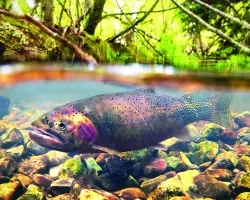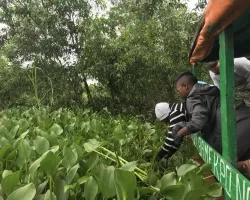Displaying 11 - 20 of 23

Topic
Columbia, Ecuador, and Peru are the most biodiverse countries in the world, and they are part of the Amazon Basin, a major conservation site. The...

Topic
The Belize Barrier Reef System is a fragile environment where water health is highly important, and it is threatened by upstream human activities. The project...
Topic
Identifying key biodiversity areas is crucial to understanding how endangered species populations react to changes in climate and urbanization. The project focuses on the fluctuations...

Topic
The country of Panama is surrounded in part by two oceans and has mountain ranges along the west and east, resulting in a wide range...

Topic
Aquatic invasive species (AIS) presence in freshwater ecosystems has increased over the past several years as a result of climate change and anthropogenic landscape change...

Topic
As Earth’s oceans undergo dramatic changes, the spatial distributions of highly migratory species and fishing fleets are shifting in response to climate-driven changes, and there...
Topic
Increasing temperatures, as well as more severe and frequent droughts and fires, has led to recruitment failure in semi-arid forests in the western US. The...

Topic
Local companies and scientists in Benin are increasing their use of earth science information to manage forests and water resources. The invasive water hyacinth plant...
Topic
Gold mining is a central component of Ghana’s economy. An increased amount of illegal artisanal mining in recent years has led to accelerated deforestation, destruction...
Applied Sciences
Climate
Risk & Resilience
SDG
Capacity Building
Disasters
Group on Earth Observations
